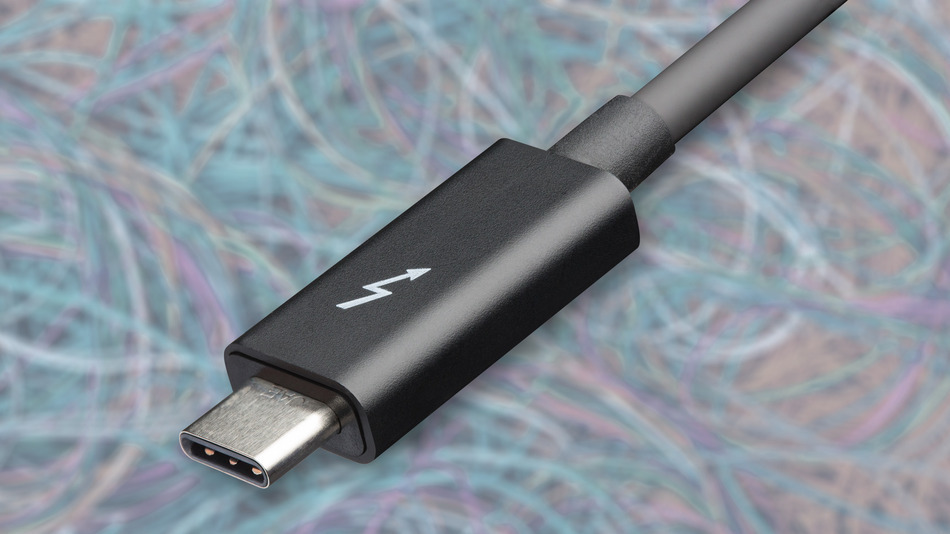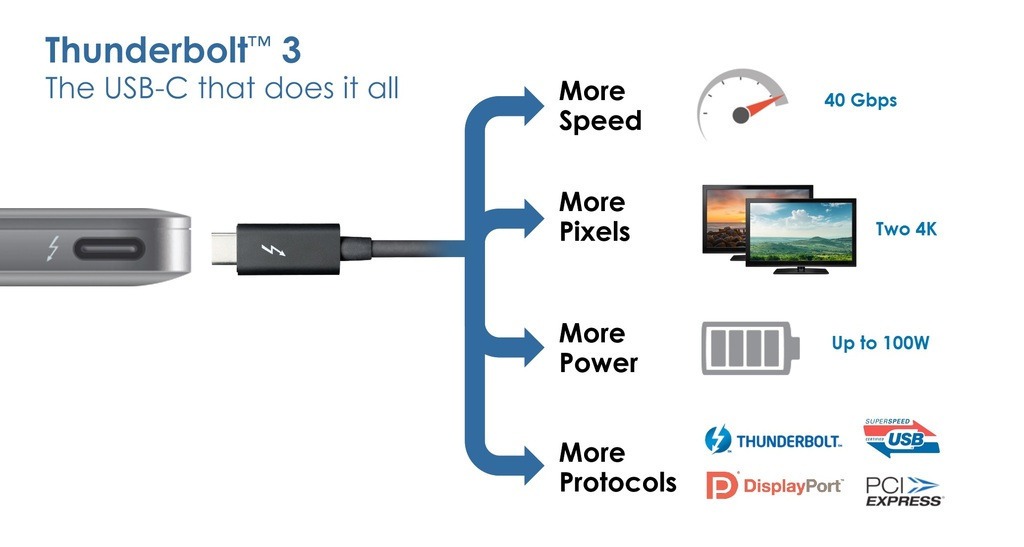
The dream of a one-cable future is looking a little more real now that newer, better USB Type-C ports are here.You may remember USB-C — the small, reversible USB port that wants to replace all your connections (charging, display, data, etc.) — from Apple’s ultra-thin MacBook and Google’s Chromebook Pixel 2.
USB-C was recently upgraded to also include the Intel’s Thunderbolt 3 transfer protocol, and Dell’s new XPS 12, XPS 13 and XPS 15 computers, announced in October, are the first ones to market with the new supercharged port.
Dubbed “port nirvana” by Intel, Thunderbolt 3 can transfer data at up to 40Gbps (gigbits per second), which is twice as fast as Thunderbolt 2, and four times as fast as USB 3.1, which tops out at 10Gbps. That’s fast enough to transfer a 4K-resolution video in under 30 seconds.
Thunderbolt 3 can also drive two 4K-resolution displays at up to 60Hz at once and quick charge notebooks at up to 100 watts.

Integrating Thunderbolt 3 into the USB Type-C protocol is a huge win for Intel. First introduced in 2011 and integrated into Apple’s MacBook and Mac computers, Thunderbolt and Thunderbolt 2 were the predecessors to USB Type C’s one-port mission.
Thunderbolt never lived up to its high expectations and is widely considered a failure outside of professional setups that need its fast transfer speeds, where users are willing to pay for it. With direct integration into the USB Type-C spec, Thunderbolt 3 stands a more likely chance of making its way into more mainstream computers.